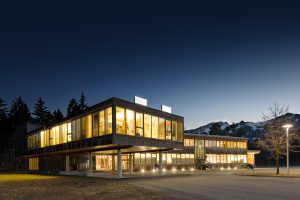This audio was created using Microsoft Azure Speech Services
Aging infrastructure, rising energy costs and reduced budgets are major issues affecting facilities across a multitude of industries. The higher education market is especially impacted as shrinking funding and valuable resources are dispersed to growing student populations. All of these factors greatly impact facility managers and their day-to-day priorities. Facility managers and the institutions they work for are becoming more focused on energy efficiency – particularly its potential to reduce overall energy and operational costs.
The Alliance to Save Energy and Schneider Electric recently surveyed more than 150 higher education facility leaders to investigate their attitudes and future plans to implement energy efficiency measures. The results are striking. Ninety-six percent of respondents view energy efficiency as important to fulfilling their school’s core mission. But more importantly, 86 percent plan to increase or maintain their investments in energy efficiency, indicating it as the most cost-effective way to meet their energy needs.
However, facility managers are finding that while they would like to make energy efficiency upgrades, they face hurdles that can be crippling to their efforts. Fifty-nine percent of respondents cited organizational barriers as the most significant challenge in achieving their energy efficiency goals. Streamlining organizational processes should be a critical component of developing an energy efficiency program, and facility managers need to establish a clear definition of success in order to secure buy-in and funding from key stakeholders.
With the majority of today’s higher education buildings expected to serve students for the next several decades, it’s more important than ever for higher education facility managers to understand how to take advantage of available resources in order to effectively manage aging infrastructure. In fact, 59 percent of higher education facility managers surveyed stated that the average age of their buildings was 15 years or older. There are tremendous opportunities that exist for improving energy management in terms of software, infrastructure modifications and leveraging government programs.
Overwhelmingly, the study found that facility executives understand the importance and impact of energy efficiency to reduce carbon emissions and overall energy costs, but many executives need assistance to get projects off the ground. To see the full results of the study and learn more about how your institution can begin to implement a strategic energy efficiency program that will have a positive impact for generations of students, view the survey here.
How do you plan to improve energy efficiency at your college or university this year? Let us know in the comments below!



